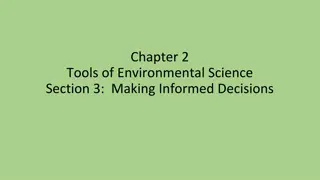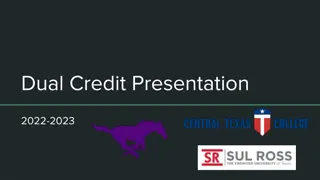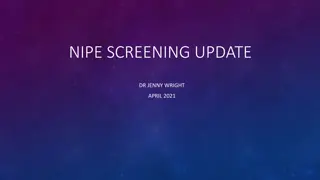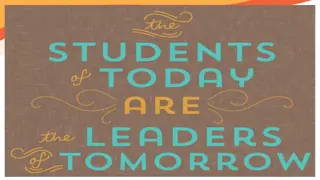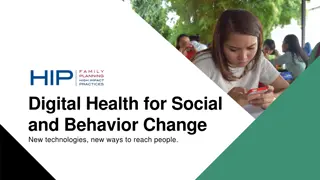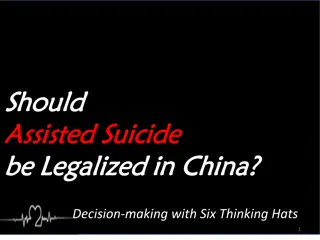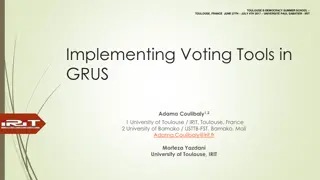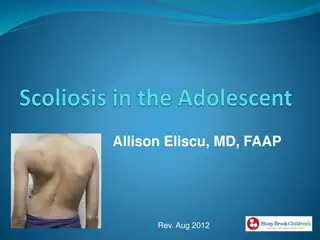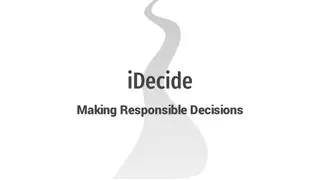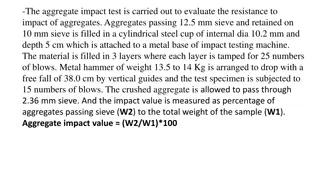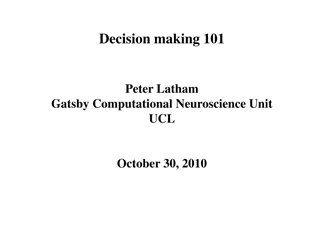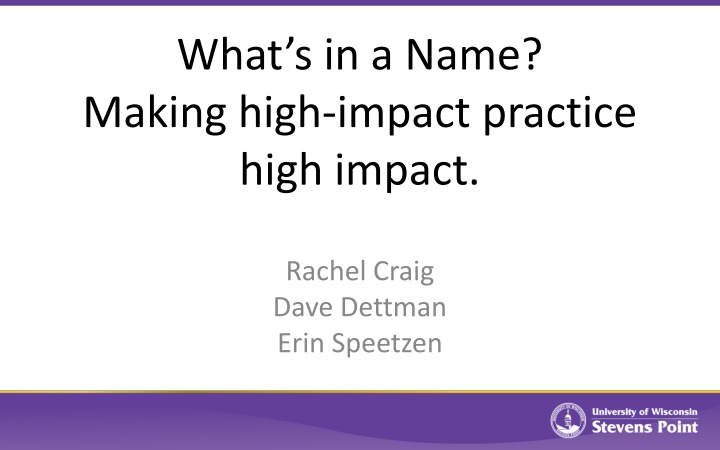
High-Impact Practices in Education
Explore the significance of High-Impact Practices (HIPs) in higher education, including their categories, quality markers, and the emphasis of quality elements within different HIPs. Discover major findings on how students perceive their experiences aligning with theoretical aspirations.
Download Presentation

Please find below an Image/Link to download the presentation.
The content on the website is provided AS IS for your information and personal use only. It may not be sold, licensed, or shared on other websites without obtaining consent from the author. If you encounter any issues during the download, it is possible that the publisher has removed the file from their server.
You are allowed to download the files provided on this website for personal or commercial use, subject to the condition that they are used lawfully. All files are the property of their respective owners.
The content on the website is provided AS IS for your information and personal use only. It may not be sold, licensed, or shared on other websites without obtaining consent from the author.
E N D
Presentation Transcript
Whats in a Name? Making high-impact practice high impact. Rachel Craig Dave Dettman Erin Speetzen
What are High-Impact Practices (HIPs)? The American Association of Colleges and Universities AAC&U has identified eleven categories of high-impact practices* First-year seminars and Experiences Internships Learning Communities Service Learning, Community-Based Learning Undergraduate research Writing-intensive courses Capstone courses and projects Collaborative assignments and projects Common intellectual experiences Diversity/global learning ePortfolios https://www.aacu.org/trending-topics/high-impact
Quality Matters HIP quality markers 1. Performance levels are set at appropriately high levels. 2. Significant investment of time and effort by students over an extended period of time. 3. Interactions with faculty and peers about substantive matters. 4. Experiences with diversity, wherein students are exposed to and must contend with people and circumstances that differ from those with which the student is familiar. 5. Frequent, timely, and constructive feedback. 6. Periodic, structured opportunities to reflect and integrate learning. 7. Opportunities to discover the relevance of learning through real-world applications. 8. Public demonstration of competence.
HIPs and Quality Markers Indiana University Center for Postsecondary Research has examined what the HIP literature suggests about the emphasis of the quality markers within different HIPs. Note: They split Periodic, structured opportunities to reflect and integrate learning into two elements, for a total of nine. the proportion of participants that report experiencing high-quality for each element.
HIPs and Quality Markers They looked specifically at First-year seminar Service-learning Learning communities Undergraduate research Internship or field experiences Study abroad Culminating senior experience
Major Findings The literature base for each HIP emphasizes some elements more than others. On average = 4 of 9 elements are strongly emphasized, 3 additional elements are moderately emphasized Students, in general, report that their actual experience reflects the aspirations from the literature.
++ = strongly emphasized + = moderately emphasized
HIPs Community of Practice 11 faculty and instructors from across campus. Designing or redesigning an experience to be a HIP based on the quality markers. Switches the focus from what we re calling the experience to what we re trying to accomplish with the experience. Dave and Rachel will share the work they ve done in the CoP.
SAC as an HIP (HIP) plan for LRES 150 - Critical Approaches to Information Research -- Structured Academic Controversy (SAC) project. Aims to enhance student learning by engaging them in collaborative research, respectful debate, and critical analysis of controversial issues from multiple perspectives. As they do each December, Merriam-Webster recently announced its word of the year. Polarization is the selection for 2024, which their dictionary defines as division into two sharply distinct opposites.
Quality Marker #1 -- Significant Investment in Time and Effort by Students Over an Extended Period Weeks 1-2 1 By structuring the project over 11 weeks, students have time to thoroughly research, debate, and reflect on their controversial topic, with the goal of fostering the deep learning associated with high-impact practices Topic selection and group assignments Weeks 3-4 2 Initial research and review Weeks 5-6 3 First round of arguments and rebuttals Weeks 7-8 4 Second round and position switch Weeks 9-11 5 Final debates, consensus papers, and presentations preencoded.png
Quality Marker #2 -- Interactions with Faculty and Peers About Substantive Matters Faculty-Student Interactions: Regular Check-ins: Weekly 15-minute meetings between faculty and student groups to discuss progress, challenges, and insights. Feedback Sessions: Weekly In-Class Work Time: Each week students will spend about 60-75 minutes working on the project in class with lots of interaction with the instructor. Peer Interactions: Structured Debates: Implement formal debate sessions where student groups present and defend their positions. Include time for rebuttals and cross-examination to deepen engagement with the material.
Quality Marker #3 Experiences with Diversity Diverse Topic Selection Choose controversial topics that inherently involve diverse cultural, ethnic, or socioeconomic perspectives. Diverse Source Material Require students to discover and interact with research materials from a wide range of sources, including: Academic journals from various cultural / disciplinary contexts News articles from international publications Personal narratives or testimonials from individuals with diverse backgrounds Reports from organizations representing different communities or interests
Quality Marker #4 -- Periodic, Structured Opportunities to Reflect and Integrate Learning Pre-Project Reflection Prompt: "Reflect on your current understanding and personal views of the controversial topic. What do you know about it? What are your initial opinions and why do you hold them?" Research Process Reflection Format: Guided journal entry -- Prompts: - What surprised you most in your research? How has your understanding of the topic evolved? Position Switch Reflection Format: Partner interview and written summary Activity: Students interview each other about the experience of switching positions, then write a summary of their partner's reflections and their own. Empathy Building Reflection Format: Reflective essay (500 words) Prompt: "How has arguing both sides of this issue affected your understanding of those who hold opposing views? Discuss any changes in your empathy or perspective."
Gathered data validates previous SAC research studies that correlate participating in the cooperative activity with student motivation and interest in learning more. In this case spending more time outside of class researching, talking about their topic with others, and considering more potential sources. Also, annotations written by the LR 101 group without the SAC activity contain more of the language from the articles abstracts or summaries than do the annotations of both groups that had the SAC activity. Annotations from the SAC group were also 24 percent longer on average.
Spring 2025 Critical Thinking Pilot -- thinkARGUMENTS - ThinkerAnalytix Argument Mapping Course
Designing a HIP: Service Learning Hearing Screenings at Special Olympics Spring games in Oshkosh, WI
Special Olympics WI Healthy Athletes Special Olympics is the world s largest public health organization for individuals with intellectual disabilities (ID), providing access to free health services for a population with significant, unmet health needs. The mission is to improve each athlete s health and fitness, leading to enhanced sports experience and improved well-being. In addition to providing health services and education to SOWI athletes, Healthy Athletes is also changing the way health systems interact with individuals with intellectual disabilities. Health care professionals and volunteers receive free training on the specific needs of individuals with ID, allowing them to return to their practices and classrooms with increased knowledge of and compassion for these patients.
Healthy Hearing screenings arefree exams designed to ensure proper audiological care for participating Special Olympics athletes. Led by volunteer professionals, Healthy Hearing also provides tests for cerumen (ear wax) and otoacoustic emissions tests. The amount of hearing loss among Special Olympics athletes is much greater than that found in the general population. Most athletes hearing problems are previously undetected, un-served or under-treated. Eight Disciplines: Fit Feet FUNfitness Health Promotion Healthy Hearing Medfest Opening Eyes Special Smiles Strong Minds
Changes I am making Mandatory participation for CSD 891/892 Included in syllabus Transportation provided Mandatory (guided) reflections NSSE Survey Questions Intentional IPE Intentional Feedback
Quality Markers Moderately Emphasized Performance Expectations Set at Appropriately High Levels Strongly Emphasized Experiences with Diversity Significant Investment of Time and Effort by Students Over an Extended Period Frequent, Timely, and Constructive Feedback Interactions with Faculty and Peers About Substantive Matters Opportunities to Discover Relevance of Learning Through Real-World Applications Periodic, Structured Opportunities to Reflect and Integrate Learning Public Demonstration of Competence
Reflection Questions: What do you think about your experience? What did you enjoy the most? Least? What skills did you gain that you can apply to your future career? Was this experience what you expected, or did you learn something unexpected? Did you learn anything about yourself from this experience?
Resources HIPs Planning Document UWSP HIP Rubric Sample assessment questions Summer Community of Practice (9 spots open!)



